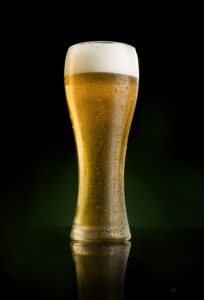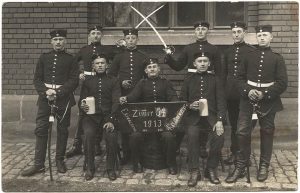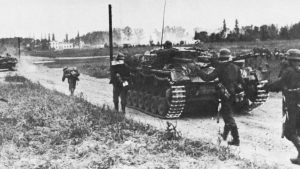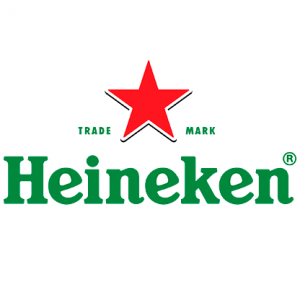61 Zywiec
Zywiec

Introduction
Zywiec Brewery is one of Poland’s largest breweries with the capacity to produce 500 million litres of beer per year. This brewery is known for its pilsners as well as stout beers. The beer is made using age-old Zywiec brewing traditions with the ingredients being the best domestic grade malted barley and hops as well as crystal clear mountain spring water. Zywiec is one of Poland’s most well-renowned beer brands due in part to their famous logos. This logo has consisted of a Polish couple performing a traditional dance known as the Krakowiak, Krakow’s coat of arms being represented by the crown located between the couple and being seen as the three spruce trees on the bottom of the label (Wikipedia, 2021).They currently produce two types of beer one being their lager, the Zywiec Biale as well as a dark strong beer known as Zywiec Porter. The Biale is a “light” beer with an alcohol content of 5.6% that is crisp, refreshing, and true to recipes passed down from the Middle Ages. Their Porter beer is a much darker and stronger beer at 9.5% ABV and attains its dark colour from using four types of malt.
Origins
The brewery began its operations in the year 1856 located in the Zywiec Valley, following brewing traditions dating as far back as the year 1537. The brewery was founded by Archduke Friedrich Habsburg and during this time, Poland was not the country we know today but was then known during the Austria/Hungary dual monarchy. During the creation of Zywiec, Poland was not known as its own independent country and completely disappeared from the map of Europe from 1795 – 1918. New distribution channels in 1913 paved the way for the beer to be transported to other towns of the Austro-Hungarian Empire. Following World War 2 the brand was confiscated by the Polish People’s Republic and was nationalized. The government was sued by descendants of the original brand with a court case being settled in December 2005. The Dutch company Heineken eventually bought out Zywiec in the mid 1990s and still take over control of major operations. Brewing methods used are very similar to their ancient roots where fermentation is necessary to produce alcohol, with more similarities being found from the Middle Ages. In the Middle Ages the addition of hops allowed for beer to be safer to drink and transported at far greater distances. Zywiec still produces their beer today using traditions dating back to the town of Zywiec in 1537 that include the use of hops, mountain spring water, and the best domestic malted barley. The result is a beer with a strong presence of hops and a very crisp taste. With all of this in mind, the people of Poland were able to keep the spirit of their Polish independence alive throughout their nation and were able to conceive what would become one of the largest breweries in all of Poland.
Key Milestones
For almost 60 years since its inception, Zywiec was well known as a local Polish pale lager, this all changed in 1913. At this time, the brewery launched its export campaign during an era where 78.7% of overall output accounted for was local. Following the events of World War 1, Poland saw the revival of the independent state and was thus reintroduced onto the map of Europe. The country of Poland as well as the Zywiec brand thrived for a little more than 20 years until the tragedy of World War 2 began. After surviving both world wars under Habsburg Imperial Family, the brand was confiscated by the Polish People’s Republic also known as, the post World War 2 Communist government of Poland. The most important milestone that Zywiec achieved was when Heineken acquired the Zywiec brewery in the mid-1990s. This allowed the brand to produce more beer and reach more distributors. All three of these milestones are very key in showing how strong and reputable the brand is to have survived not one but two World Wars as well as being a profitable brewery through the changing of ownership

Brewing Science and Industrialization
The Industrial Revolution brought about a number of developments for the beer industry and brewing process. The Revolution began in the 18th century in Great Britain and spread across Europe. With the influence of the scientific revolution in the 17th century, brewing began to transform to a big, machine-driven business. This meant bigger brewing plants which utilized new technological developments. The most significant development for the beer industry was the harnessing of steam power. Other developments followed and lead breweries to grow in size and efficiency. These include the blast furnace, refrigeration, and improved transport links.
Beer Style
Zywiec beer is best described as a pale light lager with an alcohol content of 5.6%. The beer is very light in colour with shades of yellow, gold, and pale orange. The taste of Zywiec pale lager is very crisp and quite bitter, it is a smooth beer but has a very distinct taste. As it is a lager, it is best served chilled in a glass to showcase the colour of the beer as well as enhance the taste. Zywiec is made following traditions dating back to the middle ages in Poland with ingredients used being malted barley, hops, and mountain spring water.


WW1 and WW2 era
There is no doubt that the World Wars had a drastic impact on the beer industry. At the start of the First World War in 1914, beer already held a place as a drink consumed by most nations involved in the war. Beer and war evidently did coincide. Early war photographs picture soldiers with beer kegs and mugs. Not only was beer consumed by the soldiers for enjoyment, but it was also included in their weekly rations. There were concerns though with the population of soldiers consuming beer. War measures evidently, however, shifted the industry. For instance, shortened sale and consumption measures were implemented as too much time was being spent drinking beer and other intoxicating beverages rather than producing materials for war. Additionally, with the men off at war there was a shortage of workers to contribute to the industry. Another aspect of the industry that was heavily impacted was the import and export system of beer, especially throughout Europe.
Consolidation

A company such as Zywiec which has endured not just the first World War but the second as well, Zywiec has been impacted in numerous ways. The Great World Wars impacted every industry, with the breweries being no exception. The world wars diminished any hopes of having a lifestyle that afforded luxuries. We have seen the aftermath of the great depression and how it affected the economy. Worldwide, the ability to purchase goods such as beer was greatly affected. Money, as well as resources, were scarce and individuals had to prioritize what was a necessity and what was a luxury. This greatly affected sales for Zywiec as propaganda was spread throughout the nations pleading for those of their domestic countries to keep supporting their own economy. Smaller countries like Poland, relied on their exports of beer, and with the wars looming in such a short span, it is miraculous that they were even able to endure such tough periods. Zywiec also had to endure the dissolution of the Soviet Republic. With cities such as Lviv and Vilnius being lost, a sense of pride was stripped from the community. Heineken eventually purchased the brand and was able to market them to maintain Polish identity as well as make it a respectable worldwide brand.
Marketing

Zywiec has been able to maintain its roots in Polish heritage, even through the various different acquisitions of the company. The brand has stayed loyal to its own brewing methods for days gone by and continues to do so through its marketing plan. The logo of the beer showcases the Krakowiak which is the traditional dance in the Lesser Poland. This is a traditional dance of a man and a woman that really highlights the pride of Polish culture. The Polish coat of arms is proudly displayed upon the bottle at the bottom of the label with the year 1856 displayed underneath the crown. The Zywiec logo and history of the beer itself is a great source of pride within the Polish culture. Since Zywiec is not a “household” brand, their parent company “Heineken” will never advertise the beer with the methods in which we as a western culture see today. With Heineken, one would see commercials on the airwaves, digital prints etc. Heineken banks on the fact that Polish people have such pride that when they see their beer, they will purchase it as well as hope that those that do enjoy it recommend it.
Modern Era
As Zywiec is a beer that has been around for so long dating back to its inception in 1856, it is not known as a carft beer. Zywiec is a beer cherished and loved by not just the locals of its city in Poland, but worldwide as well. In the modern era, Heineken acquired the brand and took the company to new heights with renegade brewing ranking it as the number 1 Polish beer (Renegade Brewing, 2015). WIth this in mind, Zywiec follows the traditional methods Heineken has implemented for transportation. This means that alongside Heineken shipping out their beer worldwide, Zywiec is also found alongside their cargo.
References
About Us. Harbin B.V. (n.d.). from https://harbin.nl/about-us/
Żywiec Brewery Museum. ERIH. (n.d.). from https://www.erih.net/i-want-to-go-there/site/zywiec-brewery-museum
About the Zywiec Brewery. (n.d.). from https://www.zywiecusa.com/about.php
Brief history of Poland. (2020, June 24). https://www.intopoland.com/poland-info/history-of-poland.html
ForgottonBuffaloTour. (2011, July 11). Tour of the Zywiec Brewery, Poland [Video]. YouTube. https://www.youtube.com/watch?v=Ay16rsRAsHY
Inscription on the Liberty Memorial Tower in Downtown Kansas City, M. (2022, January 19). Beer and WWI. National WWI Museum and Memorial. from https://www.theworldwar.org/learn/wwi/beer
Gourvish, T. R., andR. G. Wilson. The British brewing industry 1830–1980. Cambridge, UK: Cambridge University Press, 1994.
Renegade Brewing (2021, December 30). 15 best polish beer brands you may like. Renegade Brewing. from https://renegadebrewing.com/polish-beer/
Images
Photo Source: Zywiec beer. (2022). [digital image]. https://athloneliquorstore.com/product/zywiec-beer-pale-lager-poland-500ml-5-5-alc-vol/
Photo Source: Zywiec. (2018). [digital image]. https://www.spangshus.dk/poland/schlesienamt/zywiec
Photo Source: Culinarylore. (2016). [digital image]. https://culinarylore.com/drinks:beer-is-better-in-chilled-glasses-or-frosted-mugs/
Photo Source: theworldwar. (2022). [digital image]. https://www.theworldwar.org/learn/wwi/beer

